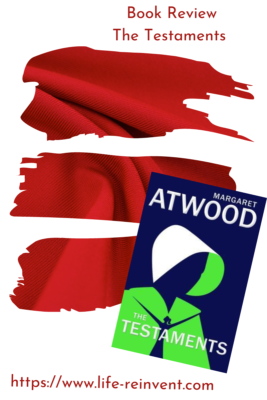
The Testaments
By Margaret Atwood
![]()
![]()
![]()
![]()
![]()
I’ve been torn about reading The Testaments. Don’t get me wrong – I’m a big Margaret Atwood fan. The Handmaid’s Tale is a standard-bearer of dystopian literature and is included in English courses. (My son is borrowing my copy for his upcoming class.)
When The Handmaid’s Tale was published, an attack on the US Capitol was a credible but unlikely plot point, so readers could stay insulated from Gilead. When The Testaments was published, those previously unlikely plot points were gaining credibility. An attack on the US Capitol has happened, and our society is more deeply divided. Gilead is closer now.
The Handmaid’s Tale was scary when it was originally published because it was well-written, and is arguably scarier now. Since The Testaments is not written as well as its predecessor, the fear – and associated impacts – shrinks.
The first book described Gilead life through the eyes of a Handmaid. The Testaments focuses on the experiences of three different characters – a Canadian girl, a Daughter of Gilead, and Aunt Lydia. It’s hard to be drawn into the girls’ stories since they’re new characters with a minimal description of their lives. Aunt Lydia is a bigger disappointment. In the first book, she was an imposing force for the cause. But in the second book, she’s a caricature.
I’ve read The Handmaid’s Tale multiple times, and I still feel uneasy just thinking about the book. While I’m glad I read The Testaments, it’s forgettable.

